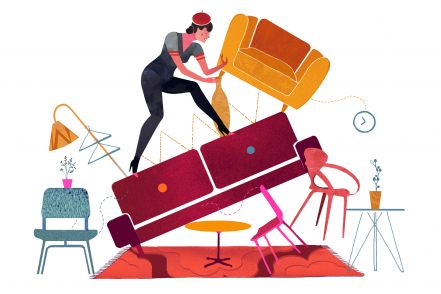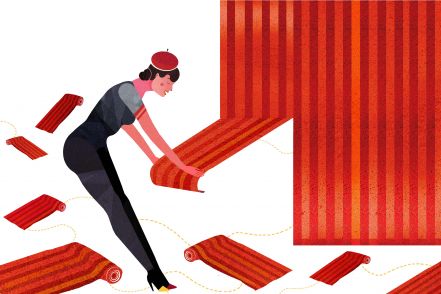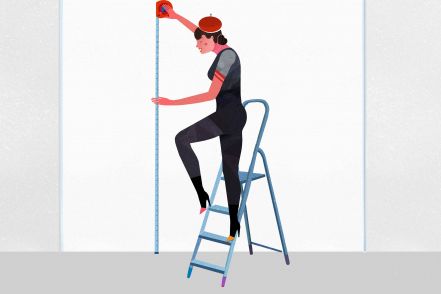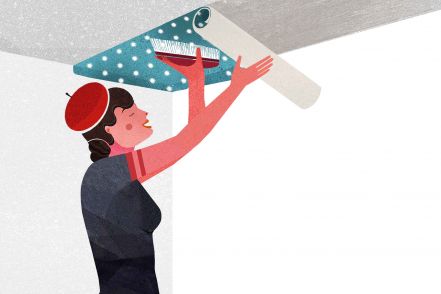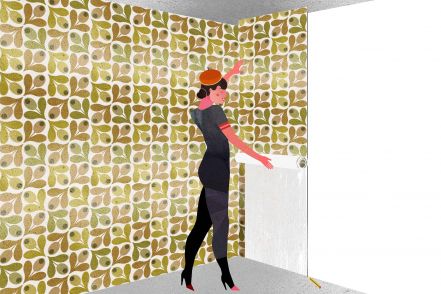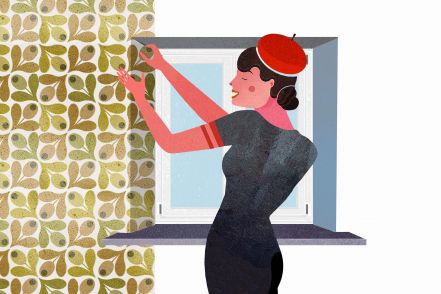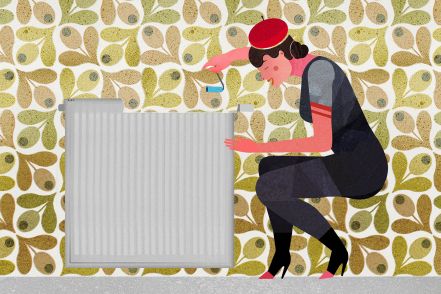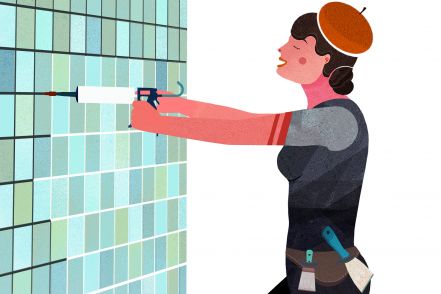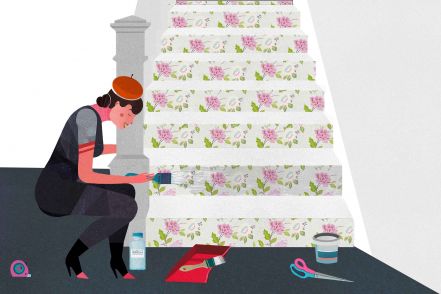How to wallpaper behind radiators
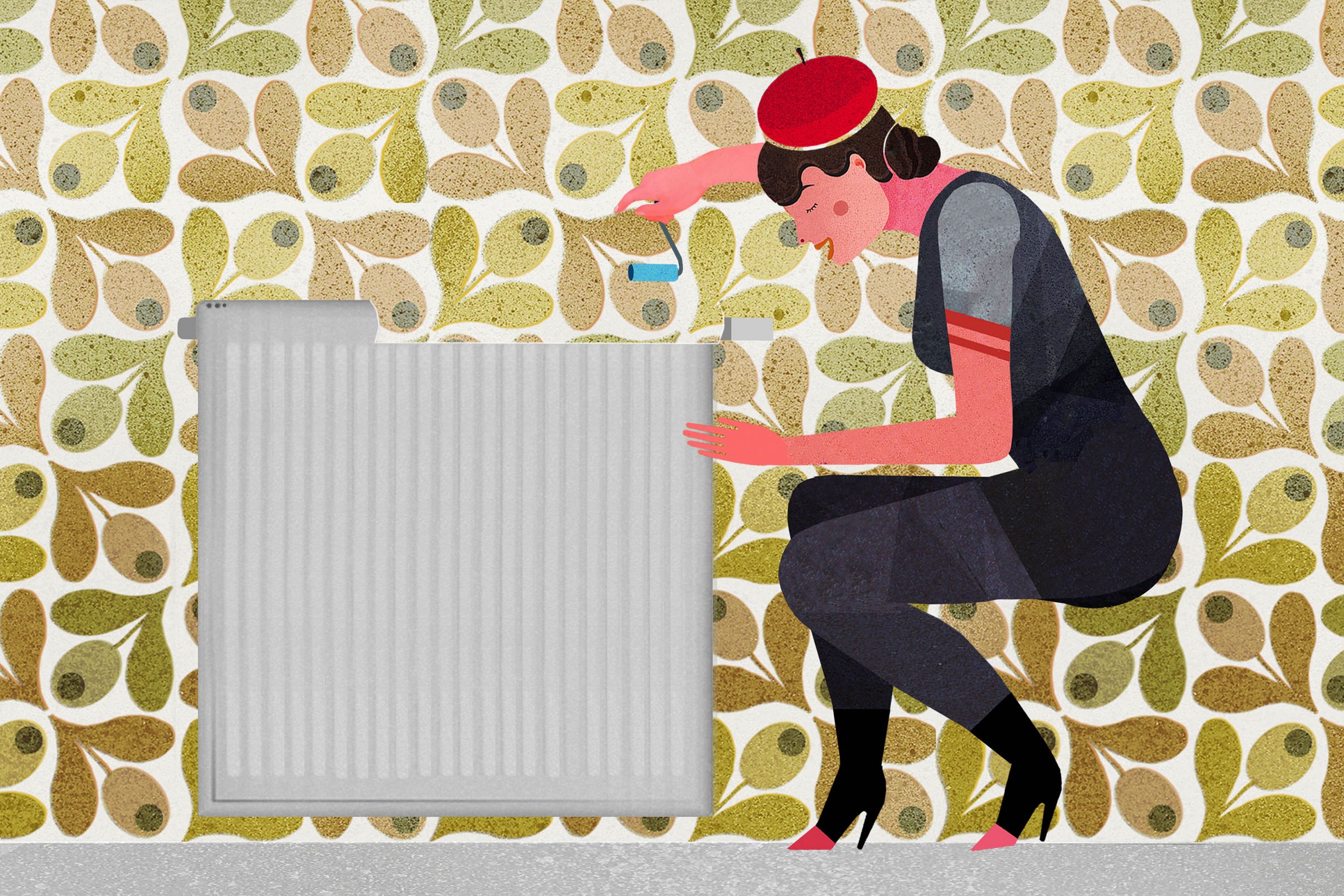
1 The three types of radiators
Ever wondered how to wallpaper behind radiators? The answer to this question depends on the type and shape of your radiator. So the first thing we'd like to do today is to introduce you to the basic types of radiators. Radiators can be grouped into three different basic types or models.
Ribbed or sectional radiators
We all are familiar with the sight of ribbed radiators, they are the standard type in older buildings but are also often used in new builds due to their variable expandability. These radiators consist of individual elements which can be combined to individual requirements.
Tubular radiators
Consist of slim tubes which can be arranged vertically/horizontally, or in a number of rows.
The wall is visible through the gaps between the tubes and the connecting elements. This is why walls behind ribbed and tubular radiators are usually wallpapered from the ceiling to the floor in order to create a unified overall picture.
Panel radiators and convectors
Provide an even, unified appearance, i.e. there are no gaps through which the wall would be visible. These models are also very flat, so wallpapering behind them would be very difficult. For these types of radiators, we recommend applying the wallpaper to all sides (but not behind).
General Information for wallpapering behind and along radiators
If you are planning to wallpaper behind a radiator, first turn it off and let it cool down. Otherwise the wallpaper will dry too quickly, which has a negative effect on the adhesive strength. The same is true for wallpapering along the edges of radiators.
Radiators are often installed underneath windows as this ensures the best heat circulation. However, this isn't necessarily always the case, and in modern housing design, radiators are often positioned at different heights on walls without windows. The following instructions explain the process of applying wallpaper around radiators positioned under windows or on walls without windows, for each radiator type.
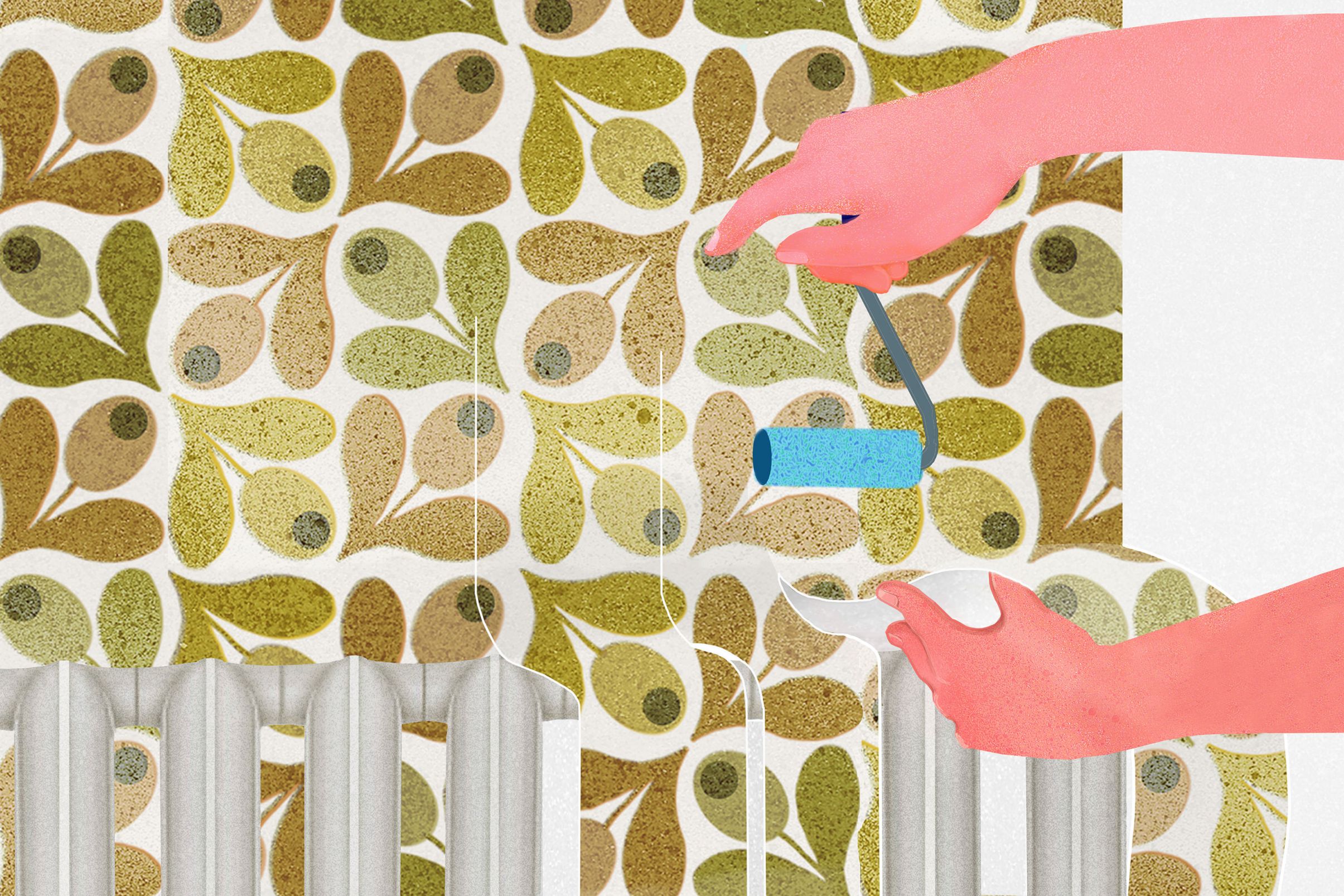
2 Ribbed and tubular radiators: Cut individual strips and apply them to the wall behind the radiator
Under Windows
Measure the length from the bottom edge of the window (window sill) to the floor. Now mark this measurement (plus about 4 cm overlap at the top and bottom) on your wallpaper. Make sure the pattern is aligned with the last length of wallpaper. Now measure from the floor to the upper edge of the radiator, adding approximately 10 cm. Put the measuring tape to the cutline of the wallpaper length and mark the spot which represents the height from floor to radiator (plus overlap). If you're working with paper-based material, fold the wallpaper (after pasting it) to this spot. After the usual soaking time. cut the bottom half up to the folded area into strips of about 10 cm width. For non-woven wallpapers, mark the same spot at the back of the wallpaper and then cut the strips all the way to the marking.
Apply the wallpaper to the wall as per usual. Once you get to the top of the radiator, unfold each strip individually and press it against the wall behind the radiator, using a wallpaper roller with a long handle. Now approach the wallpaper through the tubes from the front to finish the process. Using your fingers, try to carefully move the cutting lines towards each other as much as possible. Then cut off the overlaps by the windowsill and the floor or the skirting boards with your cutter knife.
At walls without windows
Cut a whole length from the ceiling to the floor. You need to measure the height from the bottom to the top edge of the radiator and add about 10 cm. Now mark your length of wallpaper accordingly. All further steps correspond to those of wallpapering behind radiators on walls with windows.
Alternative
If you feel brave, why not try manoeuvring the length of wallpaper as a whole (without cutting strips into it) behind the radiator. For this process, you will need to push the wallpaper down bit by bit and then pull down through the gaps at the front of the radiator. But be careful to avoid ripping the wallpaper.

3 Panel radiators and fixed Convectors: Wallpapering towards the edges of the radiator
Under Windows
Cut your wallpaper corresponding to the length of the bottom of the windowsill to the top of the radiator plus 10 cm (remember to match the pattern with the last length of wallpaper you applied). Apply the short length and press it onto the wall behind the radiator, factoring in the 10 cm overlap. You can use a painter's brush with a long handle - or simply your fingers.
At walls without windows
Proceed exactly as you would on a wall with windows, the only difference being possible variations in terms of the measurements for your length(s) of wallpaper.
Now repeat for the next length of wallpaper, which will cover the area from the floor to the bottom of the radiator. Again, remember your 10 cm overlap. Now add the side parts in the same manner (10 cm overlap) behind the radiator, not forgetting the pattern match. At the top and bottom edge of the radiator, cut the wallpaper with your scissors far enough to fold it easily.

